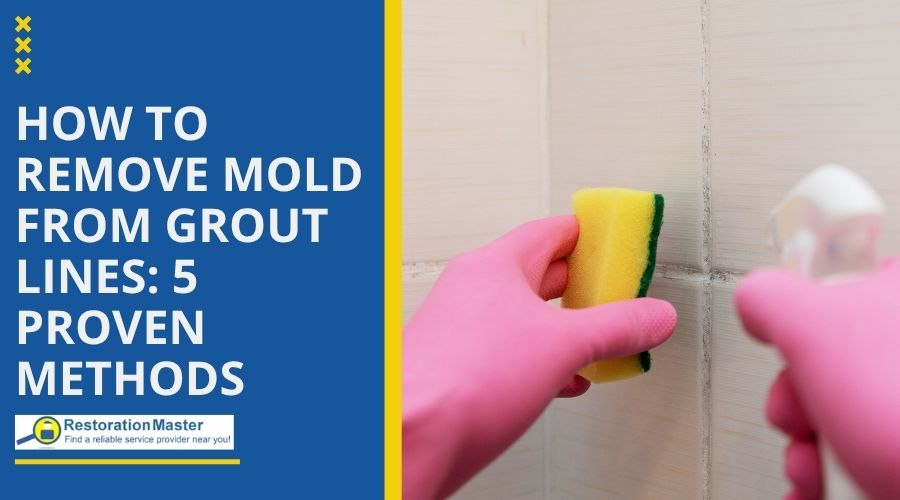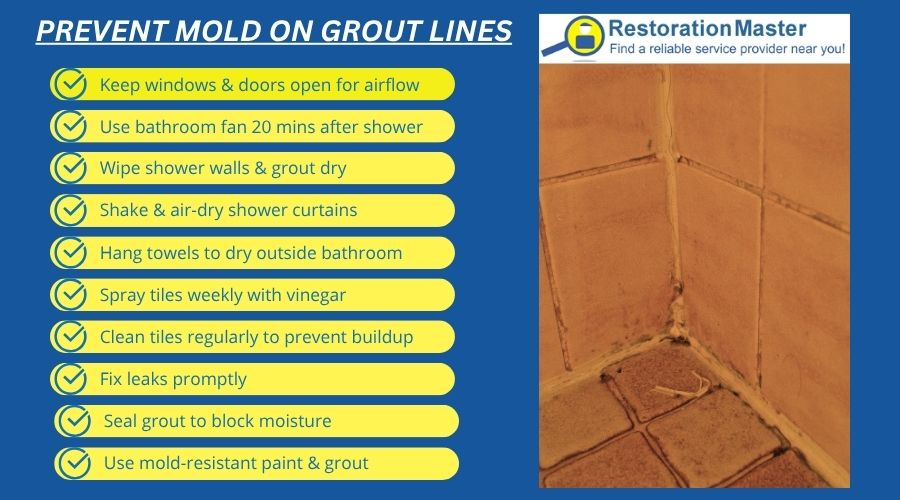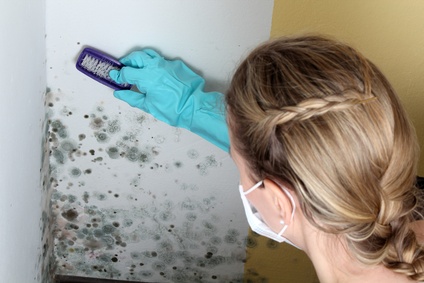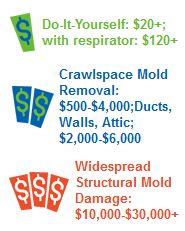Tips to Prevent and Remove Mold from Grout Lines (Complete Guide)

MoldMold is a type of fungus that grows in damp or humid conditi... More in grout lines is a common issue in bathrooms, kitchens, and other humid areas. Thanks to grout’s porousPorous describes a material that contains small openings or ... More nature and constant exposure to moisture, it becomes a magnet for moldMold is a type of fungus that grows in damp or humid conditi... More and mildewMildew is a type of fungus that grows on damp surfaces, typi... More. In this guide, you’ll learn the most effective ways to prevent moldMold is a type of fungus that grows in damp or humid conditi... More growth in grout lines and how to remove moldMold is a type of fungus that grows in damp or humid conditi... More from grout using both natural and chemical cleaning methods like bleach, vinegar, baking soda, hydrogen peroxide, and salt.
Why are Grout Lines Vulnerable to Mold Growth?
MoldMold is a type of fungus that grows in damp or humid conditi... More thrives in warm, damp spaces with poor air circulation, making bathrooms, kitchens, laundry rooms, and basements prime spots for mold growth. It’s common to see moldMold is a type of fungus that grows in damp or humid conditi... More on walls, ceilings, caulking, and on the grout lines between tiles in these rooms.
Tile grout is particularly vulnerable to moldMold is a type of fungus that grows in damp or humid conditi... More because tile surfaces are typically used in moisture-rich areas for kitchen backsplashes, shower enclosures, and bathroom floors, and grout’s porousPorous describes a material that contains small openings or ... More nature makes it a magnet for moldMold is a type of fungus that grows in damp or humid conditi... More growth. When moldMold is a type of fungus that grows in damp or humid conditi... More accumulates on grout, it doesn’t just make your kitchen or bathroom look dirty and outdated, it can also pose serious health risks to your family and compromise the structural integrity of your home.
The following are the main reasons why grout lines are often affected by moldMold is a type of fungus that grows in damp or humid conditi... More:
- PorousPorous describes a material that contains small openings or ... More Material: Grout is made from a mixture of cement, sand, and water, which makes it highly porousPorous describes a material that contains small openings or ... More. This means it absorbs moisture easily, creating an ideal environment for moldMold is a type of fungus that grows in damp or humid conditi... More to thrive.
- Constant Moisture Exposure: Grout is commonly used in areas with high humidityHumidity is the amount of moisture or water vapor present in... More and frequent water use, such as bathrooms, kitchens, and laundry rooms. These moist conditions encourage moldMold is a type of fungus that grows in damp or humid conditi... More sporesSpores are microscopic reproductive units of fungi or mold t... More to settle and grow.
- Poor VentilationVentilation is the process of exchanging or circulating air ... More: In many bathrooms and enclosed spaces, lack of proper ventilationVentilation is the process of exchanging or circulating air ... More allows humidityHumidity is the amount of moisture or water vapor present in... More to linger, which accelerates moldMold is a type of fungus that grows in damp or humid conditi... More growth in damp grout lines.
- Soap Scum and Organic Debris: Grout often collects soap scum, skin cells, and other organic matter which are common food sources for moldMold is a type of fungus that grows in damp or humid conditi... More and mildewMildew is a type of fungus that grows on damp surfaces, typi... More.
- Difficulty Cleaning: The narrow and uneven nature of grout lines makes them harder to clean thoroughly, allowing moldMold is a type of fungus that grows in damp or humid conditi... More to take hold in crevices and grow undisturbed.
10 Ways to Prevent Mold Growth in Grout Lines
As the saying goes, preventionPrevention refers to actions taken to reduce the likelihood ... More is the best cure. Instead of spending time scrubbing moldMold is a type of fungus that grows in damp or humid conditi... More from grout lines, why not stop it from forming in the first place? The secret to preventing moldMold is a type of fungus that grows in damp or humid conditi... More is simple: eliminate moisture, its main ingredient. By keeping your tiles dry, you can save yourself the hassle of dealing with moldMold is a type of fungus that grows in damp or humid conditi... More altogether.
But how do you control moisture in spaces like bathrooms, which are designed to get wet? While you can’t completely eliminate water in these areas, you can minimize dampness as there’s a big difference between surfaces that dry quickly and those that stay constantly wet.

To help you manage humidityHumidity is the amount of moisture or water vapor present in... More and prevent mold on grout lines in your bathroom, kitchen, and other spaces, here are a few simple yet effective steps you can follow:
- Try to keep doors and windows open as much as you can to let fresh air flow through your home. After you shower, leave the bathroom window open for at least 15 minutes so the extra moisture can escape instead of sticking to the walls and tiles. When you’re not using the shower, keep the door open to help it dry out faster. While cooking, open kitchen windows to let steam clear out. And don’t forget to regularly air out spaces like the laundry room, basement, and attic to keep humidityHumidity is the amount of moisture or water vapor present in... More levels down.
- Use the bathroom exhaust fan for about 20 minutes after showering to effectively remove moisture from the air.
- Wipe down shower walls and floors after bathing using a squeegeeA squeegee is a tool with a flat rubber blade used to remove... More, hand towel, or washcloth. Pay special attention to grout lines and corners where moldMold is a type of fungus that grows in damp or humid conditi... More tends to appear first.
- Choose easy-to-clean shower curtains and liners and maintain them regularly. Shake off excess water after showering and leave the curtain partially open to dry faster without hindering air circulation.
- Hang bath towels to dry after use instead of leaving them wet in the bathroom, as this contributes to humidityHumidity is the amount of moisture or water vapor present in... More.
- Spray bathroom tiles and caulking with a mold-preventing solutionA solution is a homogeneous mixture of two or more substance... More once a week. Use a natural anti-mold spray by mixing equal parts white vinegar and water or add 10 drops of tea tree oil to a spray bottle filled with water.
- Keep tiles clean with regular scrubbing. Soap scum can build up over time, creating a porousPorous describes a material that contains small openings or ... More layer that promotes moldMold is a type of fungus that grows in damp or humid conditi... More growth. Cleaning frequently reduces this risk.
- Fix leaky faucets and showerheads to eliminate the extra moisture they add to your bathroom and kitchen.
- Seal grout lines with a silicone-based grout sealant to reduce moisture absorptionAbsorption is the process by which a material takes in or so... More and promote faster dryingDrying is the process of removing moisture from materials, s... More. Many sealants also include antimicrobial properties to protect against moldMold is a type of fungus that grows in damp or humid conditi... More and other microbesMicrobes are microscopic organisms, including bacteria, fung... More.
- Use mold-resistant paint and grout with anti-fungal additives when repainting your bathroom or kitchen or installing new tiles.
By following these steps, you can significantly reduce the likelihood of moldMold is a type of fungus that grows in damp or humid conditi... More growth and keep your bathroom and kitchen in excellent condition. However, if moldMold is a type of fungus that grows in damp or humid conditi... More does develop in the grout lines, remove it promptly to prevent it from spreading.
How to Remove Mold from Grout Lines: 5 Proven DIY Methods
Removing moldMold is a type of fungus that grows in damp or humid conditi... More from grout lines takes patience and a bit of effort. It’s essential to clean the visible patches of moldMold is a type of fungus that grows in damp or humid conditi... More as well as disinfect the area thoroughly to ensure all moldMold is a type of fungus that grows in damp or humid conditi... More sporesSpores are microscopic reproductive units of fungi or mold t... More are eliminated, restoring a safe and hygienic environment in your bathroom or kitchen.
Are you wondering how to remove moldMold is a type of fungus that grows in damp or humid conditi... More from shower grout, kitchen backsplash tiles, or bathroom grout lines? There are several effective methods you can use to remove moldMold is a type of fungus that grows in damp or humid conditi... More from grout lines and prevent it from coming back. The following are the best methods:
Removing Mold from Grout with Bleach
Bleach is a powerful and effective mold-killer, especially for non-porous surfaces like tile and sealed grout. If you’re dealing with visible moldMold is a type of fungus that grows in damp or humid conditi... More on grout lines, here’s a step-by-step guide to safely and effectively remove it using bleach:
- Ventilate the Area
Open windows or turn on exhaust fans to ensure proper airflow. Bleach fumes can be strong and irritating. - Prepare the Bleach SolutionA solution is a homogeneous mixture of two or more substance... More
Mix 1 part bleach with 3 parts water in a spray bottle. (For tough moldMold is a type of fungus that grows in damp or humid conditi... More, a 1:1 ratio can be used, but start with a diluted solutionA solution is a homogeneous mixture of two or more substance... More if possible.) - Apply the SolutionA solution is a homogeneous mixture of two or more substance... More
Spray the bleach mixture directly onto the moldy grout lines. Be generous but avoid soaking surrounding materials. - Let It Sit
Allow the bleach to sit on the grout for 10–15 minutes. This gives it time to kill moldMold is a type of fungus that grows in damp or humid conditi... More sporesSpores are microscopic reproductive units of fungi or mold t... More and loosen staining. - Scrub the Grout
Using a stiff-bristled brush or an old toothbrush, scrub the grout lines thoroughly. Focus on the moldy areas, using circular motions. - Rinse the Area
Wipe down the area with a clean, damp cloth to remove any remaining bleach and moldMold is a type of fungus that grows in damp or humid conditi... More residueResidue is any leftover material, such as soot, dust, or che... More. You can also rinse with warm water if possible. - Dry Thoroughly
Use a clean towel or fan to dry the area completely. Moisture left behind can invite moldMold is a type of fungus that grows in damp or humid conditi... More back.
Important Tips:
- Never mix bleach with ammonia or vinegar as this can create toxic fumes.
- Test a small hidden area first to make sure the bleach doesn’t discolor your grout.
- If moldMold is a type of fungus that grows in damp or humid conditi... More returns frequently, consider sealing your grout after cleaning.
How to Remove Mold from Grout with Baking Soda
Baking soda is a gentle, natural, and effective way to remove moldMold is a type of fungus that grows in damp or humid conditi... More from grout without the harsh fumes of chemical cleaners. It not only helps lift moldMold is a type of fungus that grows in damp or humid conditi... More and stains but also deodorizes and mildly disinfects. Here’s how to use it:
- Make a Baking Soda Paste
In a small bowl, mix baking soda with just enough water to form a thick paste, about 3 parts baking soda to 1 part water. - Apply the Paste
Spread the paste directly onto the moldy grout lines using your fingers or a brush. Make sure to coat all affected areas. - Let It Sit
Allow the paste to sit on the grout for 10–15 minutes. This gives the baking soda time to break down moldMold is a type of fungus that grows in damp or humid conditi... More and grime. - Scrub the Grout
Use a stiff brush or an old toothbrush to scrub the grout lines. Focus on moldy spots, scrubbing in small circles to lift moldMold is a type of fungus that grows in damp or humid conditi... More from the pores of the grout. - Optional: Spray with Vinegar
For extra cleaning power, lightly spray white vinegar over the baking soda paste before or during scrubbing. It will fizz, which helps loosen grime and moldMold is a type of fungus that grows in damp or humid conditi... More even further. - Rinse Clean
Wipe the area with a damp cloth or spongeA sponge is a porous material used to absorb liquids or clea... More to remove the paste and any loosened moldMold is a type of fungus that grows in damp or humid conditi... More. Rinse well with warm water if needed. - Dry the Area
Use a towel to dry the grout lines completely. MoldMold is a type of fungus that grows in damp or humid conditi... More thrives in damp environments, so dryingDrying is the process of removing moisture from materials, s... More is crucial.
Extra Tips:
- This method is safe for most tile surfaces and won’t discolor the grout.
- Repeat weekly or as needed to maintain clean grout lines.
- Seal your grout after deep cleaning to prevent moldMold is a type of fungus that grows in damp or humid conditi... More from returning.
- You can use borax with the same method as its alkaline qualities make it very effective for cleaning, disinfecting, and deodorizing grout affected by moldMold is a type of fungus that grows in damp or humid conditi... More.
How to Remove Mold from Grout with Salt
Salt is a natural moldMold is a type of fungus that grows in damp or humid conditi... More inhibitor with antimicrobial properties, making it a surprisingly effective and eco-friendly option for removing moldMold is a type of fungus that grows in damp or humid conditi... More from grout. When applied correctly, salt can dehydrate and kill moldMold is a type of fungus that grows in damp or humid conditi... More sporesSpores are microscopic reproductive units of fungi or mold t... More while gently scrubbing away stains. Here’s how to use salt to clean moldy grout lines:
- Dampen the Grout
Lightly spray or wipe the moldy grout with water to make it slightly damp. This helps the salt stick to the surface and start working. - Apply Salt
Sprinkle a generous amount of salt directly onto the damp grout lines. Use your fingers or a dry brush to press it into the grout, ensuring good contact. - Scrub the Area
Using a stiff brush or an old toothbrush, scrub the salt into the grout lines. The abrasive texture of salt helps dislodge moldMold is a type of fungus that grows in damp or humid conditi... More and stains while killing moldMold is a type of fungus that grows in damp or humid conditi... More cells. - Let the Salt Sit
After scrubbing, let the salt sit on the grout for at least 12 hours or overnight. Salt works by drawing moisture out of the moldMold is a type of fungus that grows in damp or humid conditi... More, which helps kill it at the root. - Rinse and Wipe
The next day, rinse the area with warm water and wipe it clean with a cloth or spongeA sponge is a porous material used to absorb liquids or clea... More to remove all salt residueResidue is any leftover material, such as soot, dust, or che... More. - Dry Completely
Use a towel or fan to ensure the area is thoroughly dry to prevent new moldMold is a type of fungus that grows in damp or humid conditi... More from forming.
Pro Tips:
- Use coarse salt for more scrubbing power if your grout can handle it.
- For extra mold-fighting strength, mix salt with lemon juice or white vinegar to make a paste before applying.
- Always test a small area first to ensure your tile and grout respond well to this method.
How to Remove Mold from Grout with Vinegar
White vinegar is a natural, non-toxic solutionA solution is a homogeneous mixture of two or more substance... More that’s highly effective at killing moldMold is a type of fungus that grows in damp or humid conditi... More and mildewMildew is a type of fungus that grows on damp surfaces, typi... More. Its mild acidity helps break down moldMold is a type of fungus that grows in damp or humid conditi... More while also disinfecting surfaces, making it a great choice for cleaning moldy grout without harsh chemicals. Here’s how to use vinegar to get rid of moldMold is a type of fungus that grows in damp or humid conditi... More in grout lines:
- Pour Vinegar into a Spray Bottle
Use full-strength white vinegar, no need to dilute. Pour it into a spray bottle for easy application. - Spray the Affected Grout
Spray the vinegar generously onto the moldy grout lines. Make sure the area is saturated. - Let It Sit
Allow the vinegar to sit on the grout for at least 1 hour. This gives it time to kill moldMold is a type of fungus that grows in damp or humid conditi... More sporesSpores are microscopic reproductive units of fungi or mold t... More and break down buildup. - Scrub the Grout
After soaking, scrub the grout with a stiff-bristled brush or toothbrush to remove loosened moldMold is a type of fungus that grows in damp or humid conditi... More and stains. - Optional: Add Baking Soda for Stubborn MoldMold is a type of fungus that grows in damp or humid conditi... More
For deeper cleaning, sprinkle baking soda on the grout before scrubbing, or make a paste by mixing baking soda with a little water. When combined with vinegar, it creates a fizzing action that helps lift grime and moldMold is a type of fungus that grows in damp or humid conditi... More from the grout. - Rinse the Area
Wipe or rinse the area with warm water to remove residueResidue is any leftover material, such as soot, dust, or che... More. - Dry Thoroughly
Use a clean towel to dry the grout completely. MoldMold is a type of fungus that grows in damp or humid conditi... More thrives in damp conditions, so dryingDrying is the process of removing moisture from materials, s... More is essential.
Extra Tips:
- Vinegar may not work well on natural stone surfaces (like marble or travertine), as the acidity can cause damage. Use an alternative method in these cases.
- Repeat weekly or as needed to keep moldMold is a type of fungus that grows in damp or humid conditi... More from coming back.
- For long-term protection, consider sealing your grout after it’s clean and dry.
How to Remove Mold from Grout with Hydrogen Peroxide
Hydrogen peroxide is a powerful moldMold is a type of fungus that grows in damp or humid conditi... More remover and disinfectantA disinfectant is a chemical substance used to kill or inact... More that penetrates porousPorous describes a material that contains small openings or ... More surfaces like grout to kill moldMold is a type of fungus that grows in damp or humid conditi... More at the root. It’s also a safer alternative to bleach as it is non-toxic, odorless, and effective against bacteria, fungiFungi are a group of organisms, including mold, mildew, and ... More, and mildewMildew is a type of fungus that grows on damp surfaces, typi... More. If you’re dealing with stubborn grout moldMold is a type of fungus that grows in damp or humid conditi... More, hydrogen peroxide is a smart, budget-friendly solutionA solution is a homogeneous mixture of two or more substance... More.
- Apply Hydrogen Peroxide
Pour 3% hydrogen peroxide into a spray bottle or apply directly to moldy grout with a dropper. Saturate the affected area thoroughly. - Let It Sit
Allow it to sit for 10–15 minutes. The bubbling action helps lift moldMold is a type of fungus that grows in damp or humid conditi... More, dirt, and stains while breaking down the mold’s structureStructure refers to the framework or components of a buildin... More. - Scrub the Grout
Use a stiff brush or old toothbrush to scrub the grout. Focus on areas with visible moldMold is a type of fungus that grows in damp or humid conditi... More or discoloration. - Optional: Make a Peroxide-Baking Soda Paste
For extra scrubbing power, mix hydrogen peroxide and baking soda to form a thick paste. Apply it to the grout, let it sit for 10–15 minutes, then scrub and rinse. - Rinse and Wipe Clean
Use a damp cloth or spongeA sponge is a porous material used to absorb liquids or clea... More to wipe away residueResidue is any leftover material, such as soot, dust, or che... More. Rinse with water to remove any remaining peroxide or moldMold is a type of fungus that grows in damp or humid conditi... More debris. - Dry the Area
MoldMold is a type of fungus that grows in damp or humid conditi... More thrives in moisture, so make sure the area is completely dry using a towel or fan.
Extra Tips:
- Use in a well-ventilated space and avoid contact with eyes or clothing.
- Hydrogen peroxide is generally safe for most tile and grout but can cause discoloration on colored grout, so test it in a small, hidden area first.
- Reapply weekly in humid environments to prevent moldMold is a type of fungus that grows in damp or humid conditi... More regrowth.
Choosing the Right Cleaner: Bleach vs. Vinegar vs. Baking Soda vs. Hydrogen Peroxide
| Cleaner | Mold-Killing Strength | Safe for Grout? | Fumes / OdorAn odor is a smell, often detectable by the human nose, whic... More | Natural / Non-Toxic | Best Used For | Notes |
|---|---|---|---|---|---|---|
| Bleach | Very High | Sealed grout only | Strong, harsh | ❌ No | Deep moldMold is a type of fungus that grows in damp or humid conditi... More in sealed grout or tile surfaces | Kills moldMold is a type of fungus that grows in damp or humid conditi... More on the surface but doesn’t penetrate porousPorous describes a material that contains small openings or ... More materials. |
| White Vinegar | Moderate to High | Yes (safe for regular use) | Strong but natural | ✅ Yes | Light to moderate moldMold is a type of fungus that grows in damp or humid conditi... More; regular maintenanceMaintenance is the routine care, inspection, and repair of a... More | Helps prevent moldMold is a type of fungus that grows in damp or humid conditi... More from returning with regular use. |
| Baking Soda | Low to Moderate | Yes | No odorAn odor is a smell, often detectable by the human nose, whic... More | ✅ Yes | Gentle scrubbing; deodorizing; combined with vinegar | Mild abrasive; often used with vinegar for a fizzing clean. |
| Hydrogen Peroxide | High | Yes | Mild, chemical-like | ✅ Yes | MoldMold is a type of fungus that grows in damp or humid conditi... More in porousPorous describes a material that contains small openings or ... More or stained grout; disinfection | Penetrates better than bleach; also acts as a whitener and sanitizer. |
Professional Mold Removal
MoldMold is a type of fungus that grows in damp or humid conditi... More in grout lines might start as a small nuisance, but if ignored, it can quickly leadLead is a heavy metal that can be toxic to humans, especiall... More to larger issues. With the right preventive steps and effective cleaning methods, like using bleach, baking soda, vinegar, salt, or hydrogen peroxide, you can keep moldMold is a type of fungus that grows in damp or humid conditi... More from taking hold or remove it before it spreads. Regular ventilationVentilation is the process of exchanging or circulating air ... More, moisture control, and routine tile cleaning go a long way in protecting your home’s surfaces. Whether you’re dealing with a small patch of mildewMildew is a type of fungus that grows on damp surfaces, typi... More or a more stubborn buildup, tackling moldMold is a type of fungus that grows in damp or humid conditi... More early and consistently will help keep your tiled spaces clean, fresh, and safe for everyone in your household.
If you’ve tried all the DIY methods and moldMold is a type of fungus that grows in damp or humid conditi... More keeps coming back, or if you’re facing a severe or widespread infestation, it’s time to call in the experts. At RestorationMaster, we can help you find a professional mold remediation contractor that offers comprehensive moldMold is a type of fungus that grows in damp or humid conditi... More removal, including deep grout cleaning and long-term preventionPrevention refers to actions taken to reduce the likelihood ... More solutions. These certified technicians use advanced tools and eco-friendly treatments to eliminate moldMold is a type of fungus that grows in damp or humid conditi... More at its source and protect your home from future outbreaks. Don’t let moldMold is a type of fungus that grows in damp or humid conditi... More compromise your family’s health or your property’s value. Contact us today to find a mold remediationMold remediation is the process of identifying, removing, an... More specialist near you.
Frequently Asked Questions
Can vinegar remove mold from shower grout?
Yes. White distilled vinegar is a proven, natural moldMold is a type of fungus that grows in damp or humid conditi... More remover that works especially well on light to moderate moldMold is a type of fungus that grows in damp or humid conditi... More growth. Its acetic acid content breaks down moldMold is a type of fungus that grows in damp or humid conditi... More and mildewMildew is a type of fungus that grows on damp surfaces, typi... More while also helping prevent regrowth. For best results, spray undiluted vinegar onto the grout, let it sit for at least 60 minutes, then scrub. You can also combine it with baking soda for extra cleaning power.
How do I keep mold from coming back on grout?
Long-term moldMold is a type of fungus that grows in damp or humid conditi... More preventionPrevention refers to actions taken to reduce the likelihood ... More starts with moisture control and regular maintenanceMaintenance is the routine care, inspection, and repair of a... More. After each use, wipe down tile surfaces and ensure the area is well-ventilated. Use an exhaust fan for at least 20 minutes post-shower. In addition:
- Seal grout lines every 6–12 months with a high-quality silicone-based grout sealer.
- Spray a mold-preventing solutionA solution is a homogeneous mixture of two or more substance... More weekly (white vinegar, tea tree oil, or commercial antimicrobials).
- Address any leaks or humidityHumidity is the amount of moisture or water vapor present in... More issues promptly to eliminate the damp conditions moldMold is a type of fungus that grows in damp or humid conditi... More thrives in.












